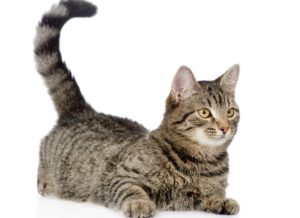Why Do We Spay and Neuter?
Below you will find information needed for spay and neutering either your cat and/or dog.
CANINE
Spayed/Neutered vs Unaltered Facts
Dog Licensing
Maui County Code 6.04.020
Did you know that EVERY dog in Maui County over the age of 4 months old must be licensed? This includes indoor dogs, dogs that are kenneled or fenced, and dogs that “never” leave the property. Dog license must be current, clearly visible, and worn at all times. License are not transferrable between owners or dogs.
A current dog license is valid for two years, and can be purchased at your local DMV. There are significant savings when you provide proof that your pet has been spayed or neutered. The Molokai Humane Society can provide a spay and neuter certificate for your pet, which will lower your cost. Current rates are $11 for a fixed pet, and $74 if they are unaltered. This price will increase to $30 and $125, so license your pet sooner than later!
Owning or harboring an unlicensed animal carries a maximum fine of $500.
FELINE
Spayed/Neutered vs Unaltered Facts
Ear Tip
What Is a TIP? A tip refers to the clean cut of the tip of a cats ear after being spayed or neutered.
Why Do We Do It? Tipping a cat’s ear is used as an identification mark for the humane society staff to see if a cat has been spayed or neutered, without unnecessarily trapping the animal and putting it through another potential surgery.
Can I Choose Not To Get the TIP? Yes. However, if you choose not to get the tip for your cat(s), you will be charged the full price of your spay and neuter visit versus having it done at a great discount (in certain cases free!).
What Are The Benefits to Getting the TIP? Cats who have the tip are eligible for special discounts (ex: clinics). For free-roaming cats, it is a sign for the Humane Society workers and for you in the community if the cat population in that particular area has already been handled. Spay/Neutered free-roaming cats are also good for the community because they keep the rodent population down, as well as keeping unfamiliar stray cats away from their territory. See some free-roaming cats without ear tips? Feel free to give us a call.
Tipping a cat’s ear is purely a cosmetic treatment used for identification.
The cats are under anesthesia when this happens, so they do not feel any pain.
The cats don’t notice this change done to them. In fact, if tipping is done as a kitten, as they grow older they grow into it and it becomes almost unnoticeable.
Requirements for Spay and Neuter
For any animal that you bring in, they need to be over 2 months of age and 2lbs in weight. We also ask that you not feed them the morning of their procedure. They will be put under anesthesia, which will make them nauseous and any food they throw up from that morning can become a choking hazard.
For puppies and kittens specifically, they are required to come in with their entire litter and mother to all get spay and neutered. This is to help the spread of any unwanted future litters. If you own the mother who had the litter, please make sure to get her and her litter spayed/neuter BEFORE you give any of the young out to friends and families.
Cost Compairson
Molokai Humane Society
Dogs and Puppies (Discounted)
Dogs and Puppies (Non-discounted)
Cats and Kittens (Discounted)
Cats and Kittens (Non-discounted)
Maui Humane Society
Dogs and Puppies
Cats and Kittens
Hawaiian Humane Society
Male Cats
Female Cats
Male Dogs
Female Dogs
Spay and Neuter Forms
To view our spay and neuter forms, or to print and fill them out ahead of time, click here.
Post Care Info
For Cats
For Dogs
Thank you for spaying and neutering your dog! You have just helped to decrease the number of potential homeless animals on island, and made your cat healthier and happier! Although spays and neuters are common procedures, please remember that your pet has just gone through surgery and needs appropriate care to properly recover.
If there are any complications, questions, or concerns, call our clinic at 808-558-0000.
Anesthesia and Surgery
Monitor your pet for any signs of abnormal recovery from anesthesia and/or surgery. These may include bleeding, lethargy or weakness, loss of appetite/decreased water intake, shivering, unsteady gait that persists beyond 24 hours after surgery.
*Seek immediate attention if your pet experiences excessive vomiting, diarrhea, labored breathing, or has pale gums.
Surgery Site
There are no stitches on the outside of the surgery site. All stitches are under the skin and are dissolvable, so there is no need to have stitches removed. The two sides of the incision are also adhered with medical grade glue.
If your animal allows, check the surgery site daily to make sure that it is healing. Where you see on the day your animal is released from surgery is considered normal. If the surgery site is very red, has green/yellow or reddish discharge, has a bad odor, has something sticking out from it, is warm to the touch, or has bruising or a bump that seems to be growing, contact us at the clinic.
Do not apply any products to the surgery site unless recommended by our staff.
Pain Medication
Your pet was given a long-acting pain medication in conjunction with the spay/neuter surgery. DO NOT GIVE HUMAN MEDICATION TO YOUR PET. It is dangerous and can be fatal. If pain perssts
Food and Water
When you get home, you can offer your dog water. If your dog is hungry, offer them half of their normal amount; they may still be nauseous from the anesthesia.
Do not worry if your pet throws up or declines food. Pet’s normal feeding habits should resume after 24 hours, when the anesthesia has worn off.
Do not remove your pets E-Collar for feeding unless you are able to supervise while the E-Collar is off. Replace the E-Collar immediately after your pet is finished eating.
Vaccination
If your pet received vaccinations, monitor the site of vaccination (front left leg), and check for signs of a reaction to the vaccine. These include swelling of the face, hives, limping, drooling, itchiness or pain or swelling at the vaccine site. If any of these signs occur, call us at the clinic.
Licking the Surgery Site
Prevent your pet from licking the surgery site as licking at the incision can cause an infection. We have E-Collars available, if this is a concern for your animal. An E-Collar should be used for 7-10 days after surgery.
Jumping and Playing
Restrict jumping and playing for seven days after surgery. Too much activity can cause the surgery site to open or become swollen. To help keep your pet from being too active:
- Place your pet in an adequately sized carrier, kennel, crate, or small room when you’re not able to supervise him/her.
- If your pet is small, carry him/her up and down stairs.
- Walk your pet on a leash to allow him/her to go to the bathroom. Do not take your pet for long walks, or allow him/her to rough house with other people or animals. Do not allow your pet to jump on furniture.
Keep your Pet Away from Other Animals
Keep neutered males away from unspayed females. Neutered males can get unspayed female pregnant for up to 30 days after neuter surgery. Keep spayed females away from unneutered males who may wish to mount them. Animals returning from the Clinic may also smell different to other animals in the household. This can cause the animals to fight, so be prepared to keep your pets in separate areas for a few days following surgery.
Bathroom Habits
Monitor your pet’s urine for blood. A small amount may be present in female animals during the first 24 hours after surgery. If this continues or if your pet seems otherwise ill at any time, call the Clinic.
Bathing your Pet
Do not bathe your pet for 10 days following surgery
Tattoo
Animals who have had surgery receive a small green tattoo. For dogs, the tattoo is placed alongside the surgical incision. No complications from the tattoo are expected, as sterile instruments are used to create it. However, please monitor the tattoo site for redness, swelling, or discharge. If these occur, please contact us at the Clinic.
Behavior
Spaying or neutering your pet can reduce or eliminate certain undesirable behaviors, such as urine making, mounting, aggression, or spraying-but these behaviors may have already been learned and might not go away completely. If these behaviors do go away, they will do so gradually.

